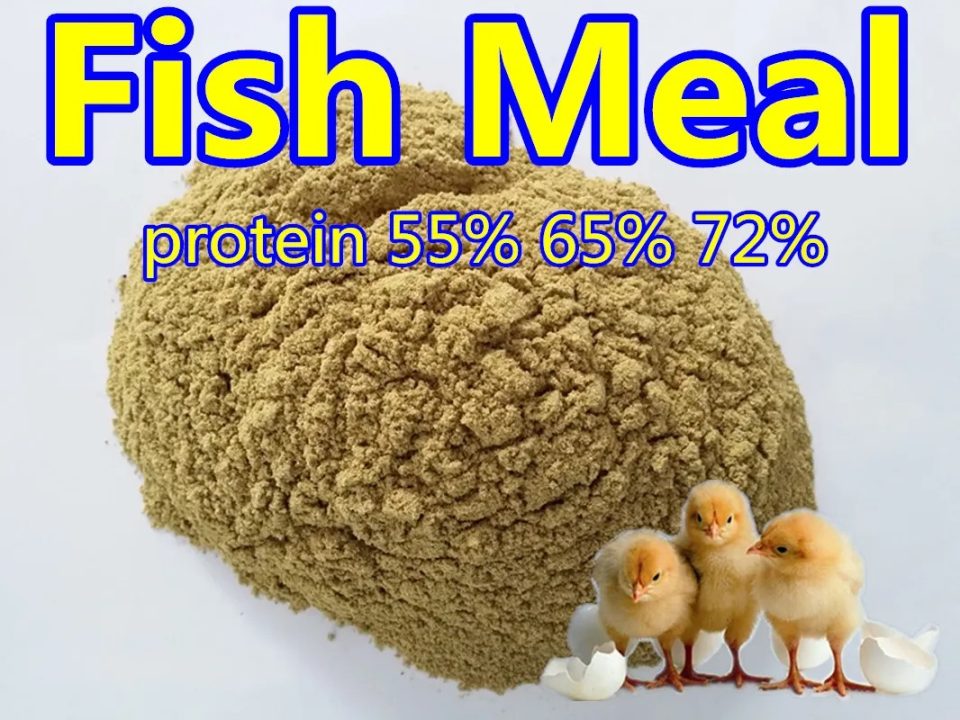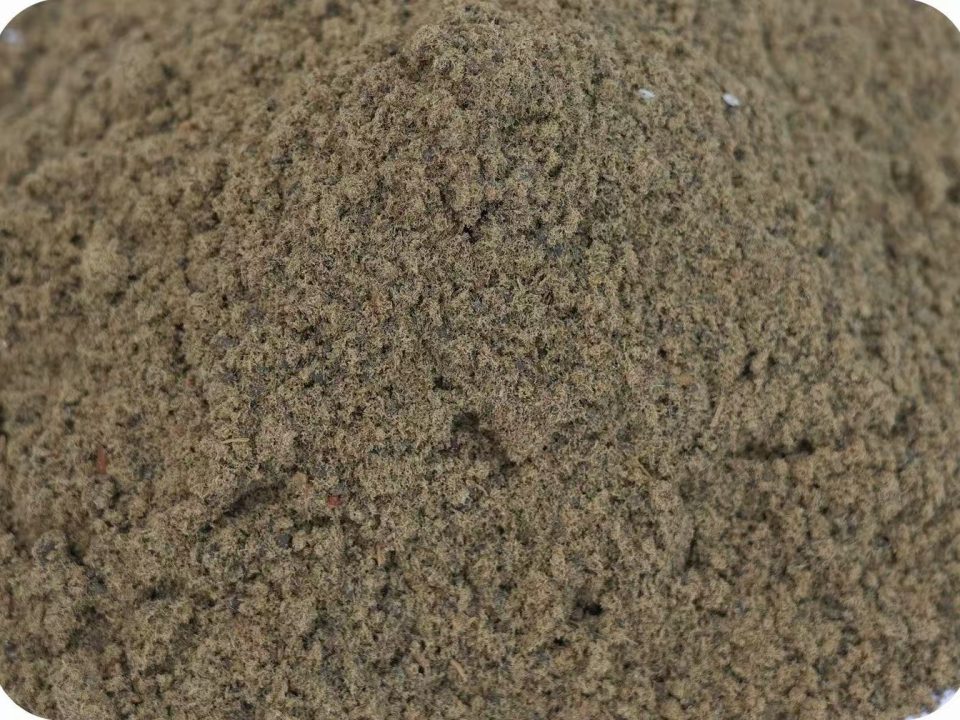Fish Meal Powder Feed Additives 72% Protein

Application Effects of Soybean Meal and Chicken Meal in Aquaculture Feed
April 1, 2025
Effects of Fish Meal Powder on Animal Fat Metabolism and Gut Microbiota
April 5, 2025Fish Meal Powder Feed Additives 72% Protein: Comprehensive Analysis and Comparison
Introduction
Fish meal powder feed additives with 72% protein content represent a premium nutritional source widely utilized in aquaculture, poultry, swine, and pet food industries. Derived from small pelagic fish (e.g., anchovies, sardines, or menhaden) or fishery byproducts, fish meal is produced through a process of cooking, pressing, drying, and grinding into a fine powder. Its high protein content, rich amino acid profile, and excellent digestibility make it a cornerstone of animal nutrition, particularly for carnivorous species like salmon, trout, and shrimp. However, with growing demand for sustainable feed alternatives, it faces competition from plant-based, animal byproduct, and insect-derived protein sources.
This analysis provides a detailed scientific evaluation of fish meal powder (72% protein) compared to soybean meal (44-48% protein), poultry by-product meal (60-65% protein), and insect meal (black soldier fly, 50-60% protein). The comparison is based on nutritional composition, functional properties, economic considerations, and environmental impact, presented in a tabular format followed by an in-depth discussion.
Comparison Table
| Parameter | Fish Meal Powder (72% Protein) | Soybean Meal (44-48% Protein) | Poultry By-Product Meal (60-65% Protein) | Insect Meal (BSF, 50-60% Protein) |
|---|---|---|---|---|
| Crude Protein (%) | 72 | 44-48 | 60-65 | 50-60 |
| Amino Acid Profile | High (balanced, rich in lysine, methionine, threonine) | Moderate (high lysine, low methionine) | High (variable, good lysine, moderate methionine) | Moderate (good lysine, variable methionine) |
| Digestibility (%) | 85-95 | 75-85 | 80-90 | 80-85 |
| Lipid Content (%) | 6-10 | 1-2 | 10-15 | 15-20 |
| Ash Content (%) | 10-20 | 5-7 | 15-20 | 5-10 |
| Moisture Content (%) | 6-10 | 10-12 | 7-10 | 5-10 |
| Anti-Nutritional Factors (ANFs) | None | Present (trypsin inhibitors, phytates, lectins) | Minimal | Minimal (chitin may act as ANF) |
| Essential Fatty Acids (EPA/DHA) | Present (1-3%) | Absent | Minimal | Absent (some lauric acid) |
| Cost (USD/ton, approx.) | 1500-2000 | 400-600 | 800-1200 | 1000-1500 |
| Sustainability | Low (wild fish stock dependency) | High (plant-based, scalable) | Moderate (byproduct utilization) | High (waste upcycling) |
| Palatability | High | Moderate | High | Moderate to High |
Scientific Analysis
1. Nutritional Composition
Fish Meal Powder (72% Protein): With a crude protein content of 72%, fish meal powder stands out as one of the most concentrated protein sources available for animal feed. Its amino acid profile is exceptionally well-balanced, containing high levels of essential amino acids such as lysine (7-8% of protein), methionine (2.5-3%), and threonine (4-5%), which are critical for growth, reproduction, and immune function in animals. The presence of 6-10% lipids, including omega-3 fatty acids like eicosapentaenoic acid (EPA) and docosahexaenoic acid (DHA), adds significant nutritional value, particularly for aquatic species requiring these fats for optimal health.
The ash content (10-20%) reflects a high mineral load (calcium, phosphorus, magnesium), which can benefit bone development but may require dietary balancing to avoid excess. Digestibility ranges from 85-95%, depending on processing quality, making it highly bioavailable and reducing nitrogen excretion in waste—a key environmental consideration in aquaculture.
Soybean Meal (44-48% Protein): Soybean meal, a plant-based alternative, offers a lower protein content (44-48%) and a less favorable amino acid profile, with a notable deficiency in methionine (1.2-1.5%). While rich in lysine (6-7%), it requires supplementation with synthetic amino acids or blending with other protein sources to meet the needs of carnivorous species. Its lipid content is minimal (1-2%), lacking essential fatty acids like EPA/DHA, and its digestibility (75-85%) is lower due to the presence of anti-nutritional factors (ANFs) such as trypsin inhibitors, phytates, and lectins. These ANFs can impair protein digestion and mineral absorption unless mitigated through heat treatment or enzyme supplementation (e.g., phytase).
Poultry By-Product Meal (60-65% Protein): Derived from rendered poultry offal, feathers, and bones, this meal provides 60-65% protein with a digestibility of 80-90%. Its amino acid profile is robust, with good lysine (5-6%) and moderate methionine (2-2.5%) levels, though variability in source material (e.g., feather content) can affect consistency. The higher lipid content (10-15%) provides energy but lacks significant EPA/DHA. Ash levels (15-20%) are comparable to fish meal, offering minerals but potentially requiring dietary adjustment. Minimal ANFs make it a practical alternative, though quality control is critical.
Insect Meal (BSF, 50-60% Protein): Black soldier fly (BSF) larvae meal offers 50-60% protein with a digestibility of 80-85%. Its amino acid profile includes decent lysine (6-7%) and variable methionine (1.5-2.5%), depending on larval diet. The high lipid content (15-20%) includes lauric acid, which has antimicrobial properties, but lacks omega-3s. Chitin, a component of the exoskeleton, may act as a minor ANF, potentially reducing digestibility in some species, though it can also serve as a prebiotic. Ash content (5-10%) is lower, reflecting fewer minerals than fish or poultry meals.
2. Functional Properties
Digestibility and Bioavailability: Fish meal powder’s superior digestibility (85-95%) results from its lack of ANFs and highly bioavailable protein structure, making it ideal for young animals and high-performance diets. Soybean meal’s lower digestibility (75-85%) is hampered by ANFs, though processing improvements (e.g., fermentation) can narrow the gap. Poultry by-product meal (80-90%) and insect meal (80-85%) offer good bioavailability, though variability and chitin content, respectively, may limit their efficiency compared to fish meal.
Palatability: Fish meal’s high palatability enhances feed intake, especially in finicky species like shrimp and cats. Poultry by-product meal shares this trait, while soybean meal’s moderate palatability may require flavor enhancers. Insect meal’s palatability varies by species but is generally well-accepted, particularly in poultry and fish.
Stability and Shelf Life: Fish meal’s moderate moisture (6-10%) and lipid content require antioxidants (e.g., ethoxyquin) to prevent rancidity. Soybean meal’s low lipid content ensures greater stability, while poultry and insect meals, with higher fats, face similar oxidation risks as fish meal.
3. Economic Considerations
Fish meal powder’s cost (1500-2000 USD/ton) reflects its premium quality and limited supply, driven by wild fish stocks and processing complexity. Soybean meal (400-600 USD/ton) is the most economical, benefiting from abundant global production. Poultry by-product meal (800-1200 USD/ton) offers a middle ground, leveraging waste streams, while insect meal (1000-1500 USD/ton) remains costly due to emerging scalability but promises future cost reductions as production scales.
4. Sustainability and Environmental Impact
Fish Meal Powder: Its reliance on wild-caught fish raises sustainability concerns, with overfishing depleting stocks and disrupting marine ecosystems. Approximately 20% of global fish catch is used for fish meal, contributing to a carbon footprint of 1.5-2.5 kg CO2e/kg product. Efforts to use trimmings (byproduct fish meal) mitigate this, but supply remains finite.
Soybean Meal: As a plant-based option, it boasts high sustainability, with a lower carbon footprint (0.5-1 kg CO2e/kg) and scalability via agriculture. However, deforestation (e.g., in the Amazon) for soy cultivation poses environmental risks unless sourced responsibly.
Poultry By-Product Meal: Utilizing slaughterhouse waste, it offers moderate sustainability by reducing landfill use. Its carbon footprint (1-1.5 kg CO2e/kg) is lower than fish meal’s, though dependent on poultry industry scale.
Insect Meal: The most sustainable option, it upcycles organic waste into protein, with a carbon footprint of 0.8-1.2 kg CO2e/kg. Scalability is improving, and its closed-loop potential makes it a future leader in eco-friendly feed.
5. Applications and Limitations
Fish meal powder excels in aquaculture (e.g., salmon, shrimp), where its protein and fatty acid profile match species needs. Its limitations include cost and sustainability, pushing research into partial replacements. Soybean meal dominates livestock and herbivorous fish feeds but struggles with carnivores due to ANFs and amino acid gaps. Poultry by-product meal suits poultry and pet food but lacks consistency for precision diets. Insect meal is versatile, with growing use in poultry, fish, and swine, though chitin and production scale remain hurdles.
Fish meal powder with 72% protein remains the gold standard for high-performance animal feeds, offering unmatched protein quality, digestibility, and functional benefits. However, its high cost and environmental footprint challenge its long-term viability. Soybean meal provides a cost-effective, sustainable alternative but requires processing and supplementation. Poultry by-product meal bridges the gap with good nutrition and moderate sustainability, while insect meal emerges as a promising, eco-friendly contender. Optimal feed strategies may involve blending these sources to balance nutrition, cost, and environmental impact, aligning with the global shift toward sustainable animal production.






